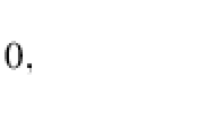Abstract
Eigen’s quasispecies system with explicit space and global regulation is considered. Limit behavior and stability of the system in a functional space under perturbations of the diffusion matrix with non-negative spectrum are investigated. It is proven that if the diffusion matrix has only positive eigenvalues, then the solutions of the distributed system converge to the equilibrium solution of the corresponding local dynamical system. These results imply that many of the properties of the quasispecies model, including the critical mutation rates that specify the infamous error threshold, do not change if the spatial interactions under the principle of global regulation are taken into account.

Similar content being viewed by others
References
Baake E, Gabriel W. Biological evolution through mutation, selection, and drift: an introductory review. In: Stauffer D, editor. Annual reviews of computational physics VII. Singapore: World Scientific; 1999. p. 203–264.
Baake E, Wagner H. Mutation—selection models solved exactly with methods of statistical mechanics. Genet Res. 2001;78(1): 93–117.
Berezovskaya FS, Novozhilov AS, Karev GP. Families of traveling impulses and fronts in some models with cross-diffusion. Nonlinear Anal Real World Appl. 2008;9(5): 1866–81.
Boerlijst MC, Hogeweg P. Spiral wave structure in pre-biotic evolution: hypercycles stable against parasites. Phys D. 1991;48(1): 17–28.
Boerlijst MC, Lamers ME, Hogeweg P. Evolutionary consequences of spiral waves in a host-parasitoid system. Proc R Soc Lond B Biol Sci. 1993;253(1336): 15–8.
Bratus AS, Novozhilov AS, Platonov AP. 2010. Dynamical systems and models in biology. Fizmatlit (in Russian).
Bratus AS, Novozhilov AS, Semenov YS. 2013. Linear algebra of the permutation invariant Crow–Kimura model of prebiotic evolution. arXiv preprint arXiv:1306.0111.
Bratus AS, Posvyanskii VP. Stationary solutions in a closed distributed Eigen–Schuster evolution system. Differ Equ. 2006;42(12): 1762–74.
Bratus AS, Posvyanskii VP, Novozhilov AS. Existence and stability of stationary solutions to spatially extended autocatalytic and hypercyclic systems under global regulation and with nonlinear growth rates. Nonlinear Anal: Real World Appl. 2010;11:1897–1917.
Bratus AS, Posvyanskii VP, Novozhilov AS. A note on the replicator equation with explicit space and global regulation. Math Biosci Eng. 2011;8(3): 659–76.
Bratus AS, Posvyanskii VP, Novozhilov AS. Replicator equations and space. Math Model of Nat Phen. 2014;9(3):47–67.
Bull JJ, Meyers LA, Lachmann M. Quasispecies made simple. PLoS Comput Biol. 2005;1(6): e61.
Cantrell RS, Cosner C. Spatial ecology via reaction-diffusion equations. New York: Wiley; 2003.
Chacón P, Nuńo JC. Spatial dynamics of a model for prebiotic evolution. Phys D. 1995;81(4): 398–410.
Cronhjort MB. The interplay between reaction and diffusion. In: Dieckmann U, Law R, Metz JAJ, editors. The geometry of ecological interactions: simplifying spatial complexity. Cambridge: Cambridge University; 2000. p. 151–70.
Cronhjort MB, Blomberg C. Hypercycles versus parasites in a two dimensional partial differential equation model. J Theor Biol. 1994;169(1): 31–49.
Czárán T, Szathmáry E. Coexistence of replicators in prebiotic evolution. In: Dieckmann U, Law R, Metz JAJ, editors. The geometry of ecological interactions: simplifying spatial complexity. Cambridge: Cambridge University; 2000. p. 116–34.
Dieckmann U., Law R., Metz JAJ. The geometry of ecological interactions: simplifying spatial complexity. Cambridge: Cambridge University Press; 2000.
Eigen M. Selforganization of matter and the evolution of biological macromolecules. Naturwissenschaften. 1971;58(10): 465–523.
Eigen M, McCascill J, Schuster P. The molecular quasi-species. Adv Chem Phys. 1989;75: 149–263.
Evans LC. 2010. Partial differential equations. 2nd ed. American Mathematical Society.
Hadeler KP. Diffusion in Fisher’s population model. Rocky Mt J Math. 1981; 11: 39–45.
Hillen T, Painter KJ. A user’s guide to pde models for chemotaxis. J Math Biol. 2009;58(1): 183–217.
Hofbauer J.The selection mutation equation. J Math Biol. 1985;23(1): 41–53.
Jain K, Krug J. Adaptation in simple and complex fitness landscapes. In: Bastolla U, Porto M, Eduardo Roman H, Vendruscolo M, editors. Structural approaches to sequence evolution, chapter 14. Berlin: Springer; 2007. p. 299–339.
Jones BL, Enns RH, Rangnekar SS. On the theory of selection of coupled macromolecular systems. Bull Math Biol. 1976;38(1): 15–28.
Karev GP, Novozhilov AS, Berezovskaya FS. On the asymptotic behavior of the solutions to the replicator equation. Math Med Biol. 2011;28(2): 89–110.
Novozhilov AS, Posvyanskii VP, Bratus AS. On the reaction–diffusion replicator systems: spatial patterns and asymptotic behaviour. Russ J Numer Anal Math Model. 2012;26(6): 555–64.
Okubo A, Levin SA. Diffusion and ecological problems. 2nd ed. Berlin: Springer; 2002.
Saakian DB, Biebricher CK, Hu CK. Lethal mutants and truncated selection together solve a paradox of the origin of life. PLoS One. 2011;6(7): e21904.
Saakian DB, Hu CK. Exact solution of the Eigen model with general fitness functions and degradation rates. Proc Natl Acad Sci USA. 2006;103(13): 4935–9.
Turing AM. The chemical basis of morphogenesis. Philos Trans R Soc B-Biol Sci. 1952;237(641): 37–72.
Verhulst F. Nonlinear differential equations and dynamical systems. Berlin: Springer; 1996.
Weinberger E.D. Spatial stability analysis of Eigen’s quasispecies model and the less than five membered hypercycle under global population regulation. Bull Math Biol. 1991;53(4): 623–38.
Wilke CO. Quasispecies theory in the context of population genetics. BMC Evol Biol. 2005;5(1): 44.
Acknowledgments
This research is supported in part by the Russian Foundation for Basic Research (RFBR) grant #10-01-00374 and joint grant between RFBR and Taiwan National Council #12-01-92004HHC-a. ASN’s research is supported in part by ND EPSCoR and NSF grant #EPS-0814442. CKH is supported in part by Taiwan-Russia collaborative research grant #101-2923-M-001-003-MY3 and NCTS (North).
Author information
Authors and Affiliations
Corresponding author
Rights and permissions
About this article
Cite this article
Bratus, A.S., Hu, CK., Safro, M.V. et al. On Diffusive Stability of Eigen’s Quasispecies Model. J Dyn Control Syst 22, 1–14 (2016). https://doi.org/10.1007/s10883-014-9237-4
Received:
Revised:
Published:
Issue Date:
DOI: https://doi.org/10.1007/s10883-014-9237-4




